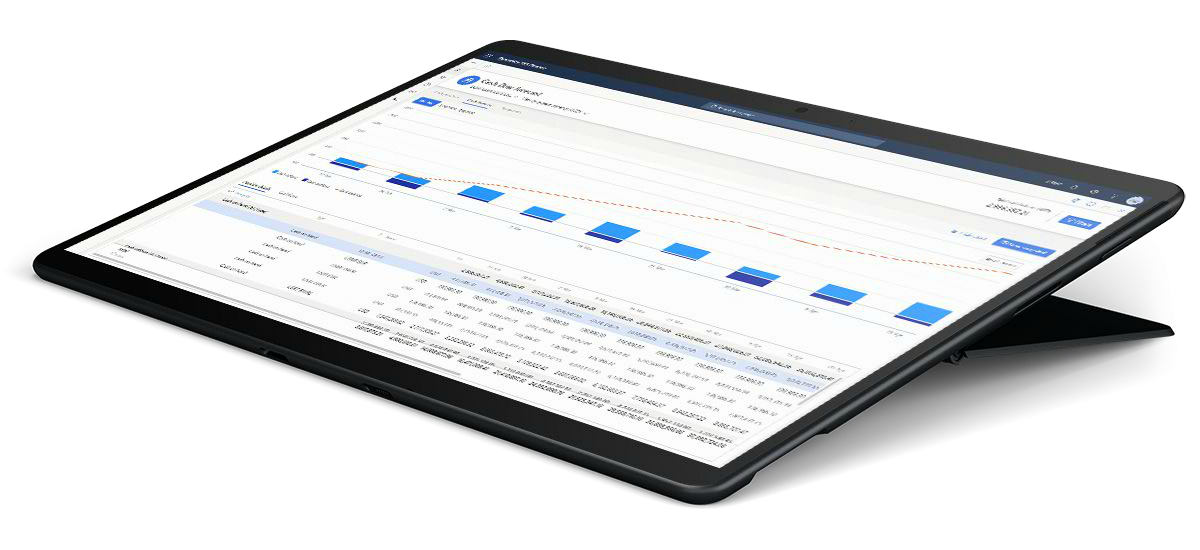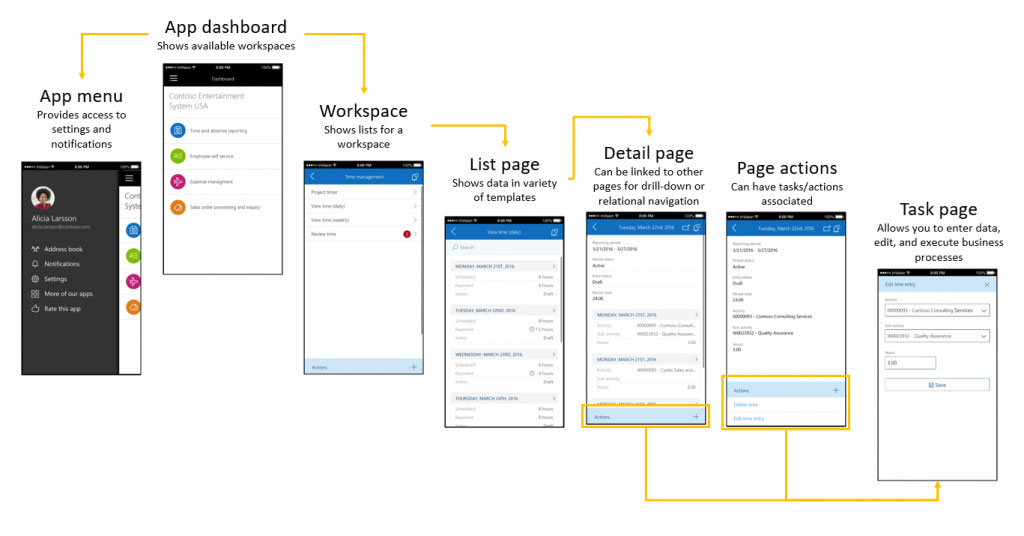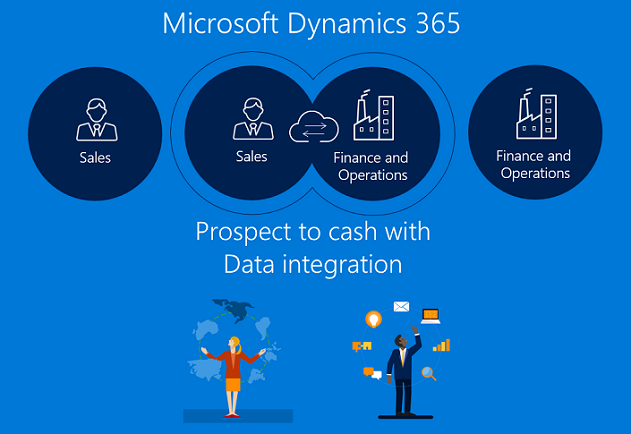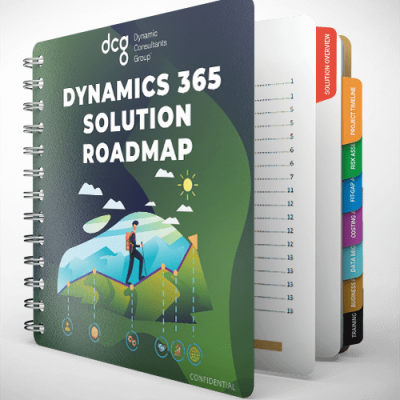Upgrade Dynamics AX to
Dynamics 365 Finance & Operations
It’s time to transition from Dynamics AX 2009 or AX 2012 to Dynamics 365 for Finance and Operations. While the thought may seem daunting, we’re here to help you navigate your ERP migration from a legacy on-premise system to a full enterprise cloud deployment of Dynamics 365 Finance.
dYNAMICS 365 fINANCE IS A FULLY CLOUD BASED ERP
wHY sHOULD i uPGRADE ax TO dYNAMICS 365?
Your EPR is Critical to your operations - don't get left behind with a legacy ERP that is no longer supported by Microsoft. Upgrade your Legacy AX platform to the cloud based Dynamics 365 Finance
Businesses often resist change, especially when it comes to something as fundamental as their ERP system. If you’re like many companies relying on a legacy solution like Dynamics AX, you may be getting along okay with your current software, but overlooking all the potential benefits of upgrading by focusing too much on the complexities associated with it. Dynamics 365 Finance is your smoothest upgrade path from AX 2009 or AX 2012.
Dynamics 365 Finance and Supply Chain Management Features
As your team has become more savvy with its ERP solution, there’s no doubt that you’ve come to desire tools and features that Dynamics AX simply can’t offer. Here’s a review of the new features Dynamics 365 Finance brings:
Better Budget Control
Plan your budgets with more detail and maintain better control over expenditures with out-of-the-box controls for purchasing cost, project cost, and more. Enjoy greater budget visibility, too.
Exchange Rate Integration
Your global organization no longer has to deal with the tedious exchange rates each day, week, or month. Dynamics 365 Finance allows you to integrate with an exchange rate provider for automatic updates.
Audit Workbench
Set your organization up with tighter audit controls using the in-built audit workbench that allows you to run samples with little manual data handling and set controls for your financial team.
Advanced Reconcilliation
Reconciling your bank account statements and ERP system has never been simpler thanks to some of the most advanced reconciliation features available. Set industry-wide formats, import them into your system, and ensure accuracy with little manual intervention.
Localization
When rolling out a new ERP solution at-scale, it’s inevitable that you’ll run into varying regulations and requirements. Out-of-the-box localization features help you meet the needs of financial teams around the world.
Global Entry Forms
Global entry forms allow users to create invoices and journal entries across your shared services model with no need to switch between entities. This will avoid mistakes and permits easy access to all your information on one single software.
Additional features, such as the management report, aged customer balances snapshot, cost accounting, cost allocations, and more make Dynamics 365 Finance one of the most advanced, scalable, and efficient solutions for your finance and operations team.
A Cloud-First Solution to Empower Growth
Dynamics 365 Finance is a cloud-first solution with no on-premise servers. By deploying your system in the cloud, you’ll ensure cross-device access for your entire team while maintaining better control over your data. Being cloud-first, you’ll find that Dynamics 365 Finance is more accessible and easier to use for everyone on your team, and the time to implement it is greatly reduced. The software will “live” on Microsoft’s servers, so your team just needs a web browser and internet connection to access it. Since you’re running in the cloud, Microsoft is responsible for handling the infrastructure, security measures, updates, and data backups, saving your IT department massive amounts of time.

Interested in updating your Dynamics AX to Dynamics 365 Finance and Operations?
Modern Security Solutions for Modern Companies
As a cloud first solution, Microsoft has prioritized security to give companies confidence and added control. Dynamics 365 Finance has a model that aims to improve privacy, protect data integrity, and support accessibility and collaboration at-scale without compromising on security.
When setting up Dynamics 365 Finance, you’ll be able to use advanced access controls to ensure users only have the appropriate level of information necessary for their role.
Restrict access based on custom roles throughout your organization and enable data sharing so that a user or team can be granted temporary or permanent access to a record that their role does not have access to for easy collaboration. Meanwhile, you can prevent users from sharing records at all or sharing records with users that don’t have the right level of access.
These advanced security controls provide peace of mind while maintaining data integrity, all without getting in the way of day-to-day collaboration.

Highly Accessible and Mobile
One of the undeniable perks of working with a cloud-first solution is the sheer amount of accessibility your team will enjoy.
Since there’s nothing to download, install, or manage locally, your team can access the Dynamics 365 portal from anywhere as long as they have a web browser and internet connection. In addition to being highly accessible, though, Dynamics 365 is also entirely mobile.
Rather than expecting your team to sit down at a desktop computer or bring a laptop along, Dynamics makes it easy to collaborate from anywhere thanks to its advanced smartphone and tablet apps. The Finance and Operations app is feature rich.

- Users can view, edit, and make decisions using up-to-date business data, even if they don’t have a stable network connection or they’re entirely offline. Whenever their device connects, data synchronizes automatically so they have the latest information possible.
- The app will re-use your existing code assets, so you don’t have to re-implement your business logic, security protocols, or validation procedures manually.
- Custom mobile workspaces can be created by your company’s IT or development department using the codeless workspace designer that’s bundled with the Dynamics 365 web client, making it easy to customize and optimize employees’ mobile experiences.
- Offline capabilities can be further optimized for your company’s mobile app using the business logic extensibility framework. Mobile scenarios are rich and fluid since data is processed even if the device doesn’t have continuous network connectivity.
Installing the Dynamics 365 mobile apps is easy, simply have your team go to the App Store or Google Play Store and find the application. Once they login using their regular credentials, they’ll gain access to all the features and tools they need for their role.
Just like in the web interface, Dynamics 365 offers an incredible clean and intuitive user experience in both the smartphone and tablet applications. Users will have no issue navigating the app and finding the information they need, with a smart design minimizing the learning curve and helping your team get more done.

Integrations with Popular CDS and CRM Platforms
No software is the right fit unless it is able to integrate with the other major software your organization depends on. Once known as Common Data Service (CDS), Microsoft now calls this powerful integration backbone the “Microsoft Dataverse.”
Using Dataverse, your organization can securely and flexibly manage its data across applications. With the use of Power Apps, you can even build rich applications to put this data to work through analysis, automation, and other powerful tools.
If you’re worried about Dynamics 365 Finance integrating with other solutions, like your Customer Relationship Management (CRM) platform, integrations are easy to setup, assuming you have the right team by your side.
Comparing Your Options
Here’s how Dynamics 365 Finance stacks up against its most popular competitors.
Oracle NetSuite
Both Oracle ERP and Dynamics 365 Finance solution come highly rated for ease of use, value, and customer support.
The biggest downside identified for Oracle’s solution is that implementation is highly time-consuming and, while customization is straightforward, you must prepare for a great deal of testing before anything can go live. Meanwhile, Dynamics 365 Finance is favored, but the high price tag turns smaller businesses off.
SAP S4/HANA
When comparing SAP S4/HANA to Dynamics 365 Finance, the biggest difference is the user interface. While Microsoft has gone out of there way to create a user-friendly, intuitive UI that anyone can hop in and start using, SAP S4 offers similar features but presents them in a much less user-friendly way.
Both offer full support, but to top off its complicated interface, SAP does not offer user training.
Dynamics 365 Business Central
Business Central offers standardized capabilities to unify your business across its supply chain, finance, operations, and project management initiatives, much like Dynamics 365 Finance.
The main difference between these two solutions is the scale at which they’re intended to work — Microsoft is built to function at enterprise scale, powering hundreds of thousands of transactions, while Business Central is really intended for small to medium-sized businesses.

Planning Your Upgrade Roadmap
Have you decided that Dynamics 365 Finance is the best solution for your finance and operations management? With a cloud-first approach, incredibly user-friendly UI, and so many features to power your company’s growth, there’s little reason not to choose Dynamics. Of course, a successful implementation starts with the right partner.
Here at Dynamic Consultants Group, we believe in offering straightforward and solid pricing with no hidden fees. With us, you won’t go over-budget because of multiple Change Orders coming to your desk — we believe in measuring thrice and quoting once, offering you transparency and accuracy from the beginning.
Interested in learning more about Dynamic Consultants Group and our Dynamics 365 Finance implementation process? Our Solution Roadmap Workshop is a proven tool that helps our customers come in at an average of 12% under their budget and up to 6 weeks ahead of schedule.